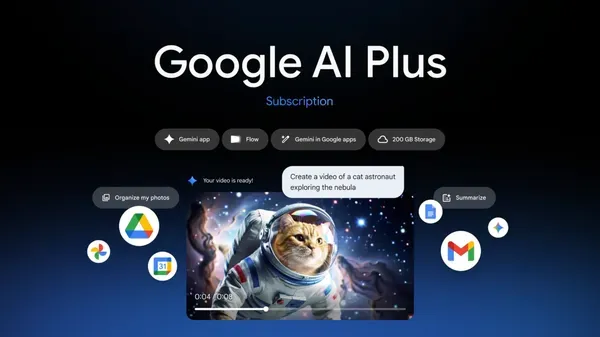Google product manager Ryan Salva oversees the company's developer AI tools, including Gemini CLI and Code Assist. In a revealing interview, he shares how AI coding has moved beyond autocomplete to full workflow automation, with developers spending 70-80% of their time directing AI through natural language rather than writing code directly. The shift signals a fundamental change in how software gets built.
Google's latest research reveals a striking timeline: most developers didn't start using AI coding tools until April 2024. That's when everything changed. "This corresponds fairly neatly to Claude 3 coming out and Gemini 2.5 coming out," says Ryan Salva, Google's product manager for developer tools. "This is really the dawn of the reasoning or thinking models."
Salva would know. He's responsible for tools like Gemini CLI and Gemini Code Assist, putting him at the center of how AI is reshaping software development. His team's new third-party research published Tuesday shows the rapid adoption isn't just hype - it's a fundamental shift in how code gets written.
The breakthrough wasn't just better language models. "Around that same time, we got much better at tool-calling," Salva explains. "For coding tasks, you really need to leverage external information to problem solve. It may need to grep, compile the code, run unit tests. Tool-calling gave models the ability to self-correct as they move along."
This self-correction capability transforms coding from a conversation into an autonomous workflow. Salva uses Gemini CLI for 70-80% of his development work, but not the way you might expect. "I would say probably 70% to 80% of my work is me working in the terminal with natural language," he reveals. "I'm using the IDE as a place to read the code, rather than to write the code."
His process starts with under-specified GitHub issues - the kind of vague bug reports every developer knows. He feeds these into Gemini CLI to generate robust requirement documents, often 100 lines of technical specifications. Then the AI writes the code based on those specs and the team's documented preferences for testing and dependency management.
"As Gemini CLI is going through and doing the troubleshooting, I'll have it update my requirements doc saying, 'I fixed this step. Now I'm on to the next step,'" Salva describes. Each step creates its own commit and pull request, creating an audit trail that lets developers rewind or undo changes.
This workflow represents a fundamental shift from the IDE-centric development that's dominated for three decades. "You had the IDE, you had the browser, and you had the terminal window," Salva notes. "I think that's still largely the case, but I suspect that over time we'll end up spending a lot more time working with the requirements, and the amount of time spent in the IDE will gradually shrink."












